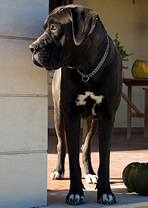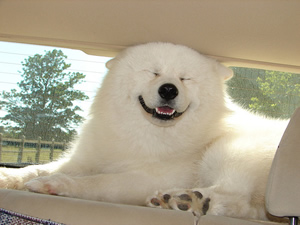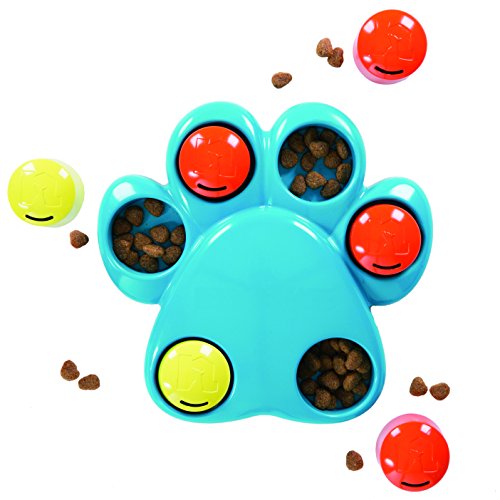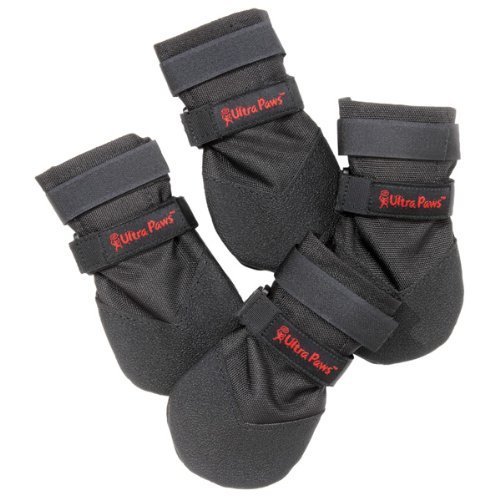Play training remains important part of dog obedience right through the training and trialling stages. Puppies are easily distracted and test the patience of even the most patient souls. Trainers must remember the time you spend training your puppy now will pay off when you have an adult dog. The aim of dog obedience is to give your puppy, adolecent and elderly dogs a better, more enjoyable dog life.
To begin a puppy should become accustom to wearing a collar. A simple buckle collar is fine for this purpose. If your puppy is rolling around or trying to scratch the collar off, don't take it off him until they accept the collar.
For young puppies all you need is a light weight, thin leash. Larger dogs can require a 1 inch wide leash and smaller dogs a half inch wide leash. You can upgrade to a fancy leather leash when your puppy is properly leash trained if you like.
When the puppy is comfortable with the leash, pick it up and let the pup lead you around. The good thing about training a puppy to walk on a leash is that you can prevent any problems before they eventuate. If your puppy pulls on the leash immediately stop. Don't yank him back over to you with the leash, just call him over and praise him when he comes. For young puppies all you need is a light weight, thin leash. The jerking is meant to get the dog's attention, not to inflict harsh punishment. They may pull on the leash and try to lead you.
If when given the command "come" a puppy responds with the correct action and is not praised, he quickly loses enthusiasm and interest. If you keep repeating the command, the puppy will learn that several repetitions are acceptable before he needs to obey.
A treat helps keep you get your dogs attention and is a great way to reward an obedient puppy. Allow the puppy to sniff the treat in your hand.
As you walk forward talk to the pup and encourage him to stay with you. Take slow steps, so that the puppy can keep up your pace, but don't go so slow that the pup becomes bored. Praise him and give him the treat. Don't use treats every single time, however; otherwise you will find yourself with a dog that only obeys when you have a treat in hand. Training does not have to involve a 30-minute block of time. Short training sessions that reinforce what your puppy have learned are best.
Praise your dog or give a treat, when he sits, even if you had to help him at first. Slowly raise the hand with the treat up and back over the pup's head saying the word "sit". Your puppy will quickly associate the word sit, the treat, and the action of sitting. Have your dog in the sitting position and give the command "heel" and start walking forward.
Incrementally develop your dog's obedience skills by increasing distance, duration, and distraction. Introduce your puppy to different people, dogs, children and environments. If you vary the places you train your puppy he will be more likely to learn to obey wherever you are.

 Cane Corso Breeder Interview Breeder Interview: Virginia Dunn Discusses The Great Italian Mastiff
Cane Corso Breeder Interview
The Dog Guide is pleased to p
Cane Corso Breeder Interview Breeder Interview: Virginia Dunn Discusses The Great Italian Mastiff
Cane Corso Breeder Interview
The Dog Guide is pleased to p
 Dogs :: Stomach Torsion in Dogs and How to Prevent It (Page 1 of 2)
Also known as gastric torsion, bloat, and GVD (gastric dilat
Dogs :: Stomach Torsion in Dogs and How to Prevent It (Page 1 of 2)
Also known as gastric torsion, bloat, and GVD (gastric dilat
 Adventures with Your Dog: 23 Ways To Spend Quality Time With Your Pooch!
23 Great Adventures With Your Dog
Its important to spend
Adventures with Your Dog: 23 Ways To Spend Quality Time With Your Pooch!
23 Great Adventures With Your Dog
Its important to spend
 13 Unusual Things You Didnt Know Your Dog Really Enjoys
There are a lot of things th
13 Unusual Things You Didnt Know Your Dog Really Enjoys
There are a lot of things th
 Whats in Your Pets Dog Paw and Feet
Paw showing pads A. Claw, B. Digital Pads, C. Metacarpa
Whats in Your Pets Dog Paw and Feet
Paw showing pads A. Claw, B. Digital Pads, C. Metacarpa